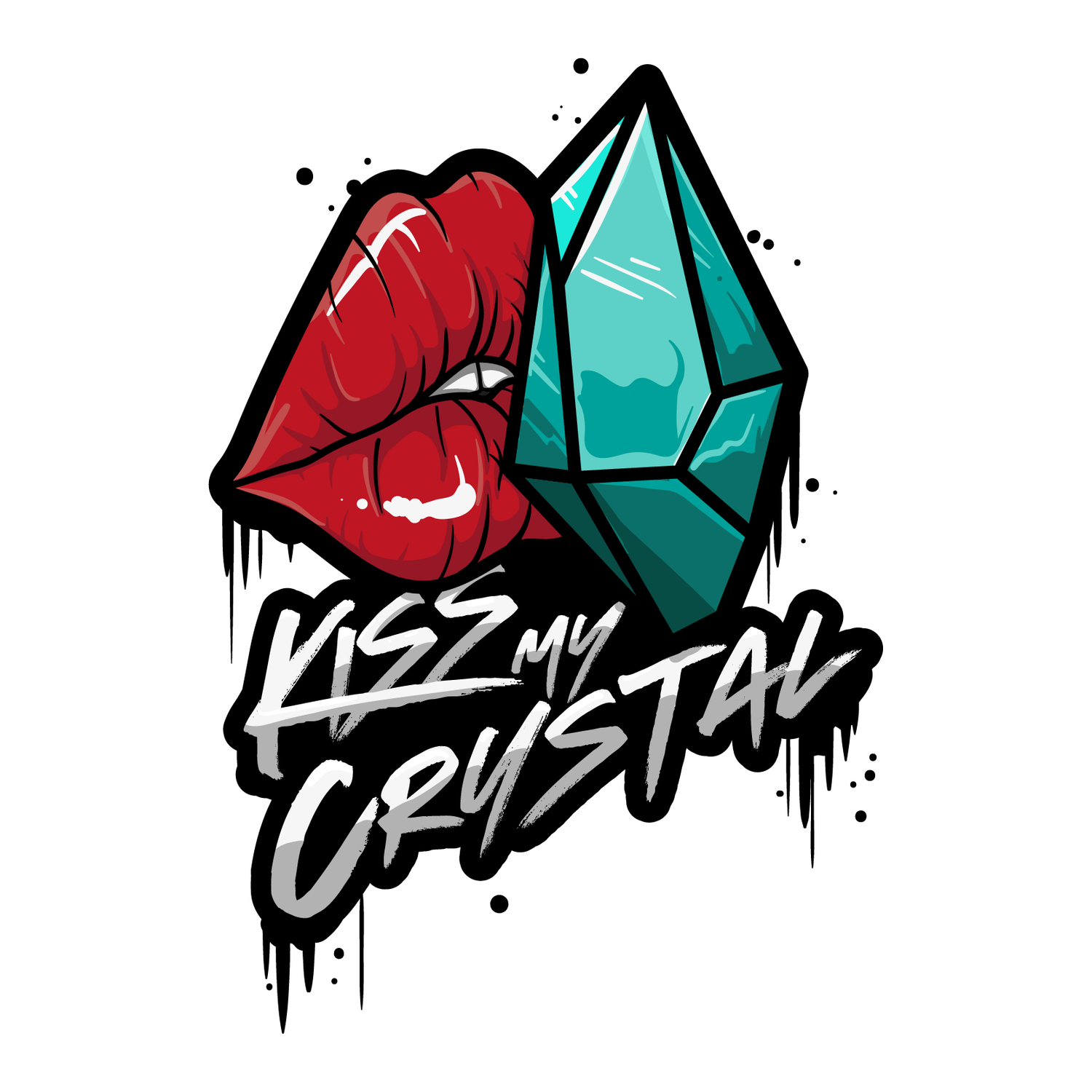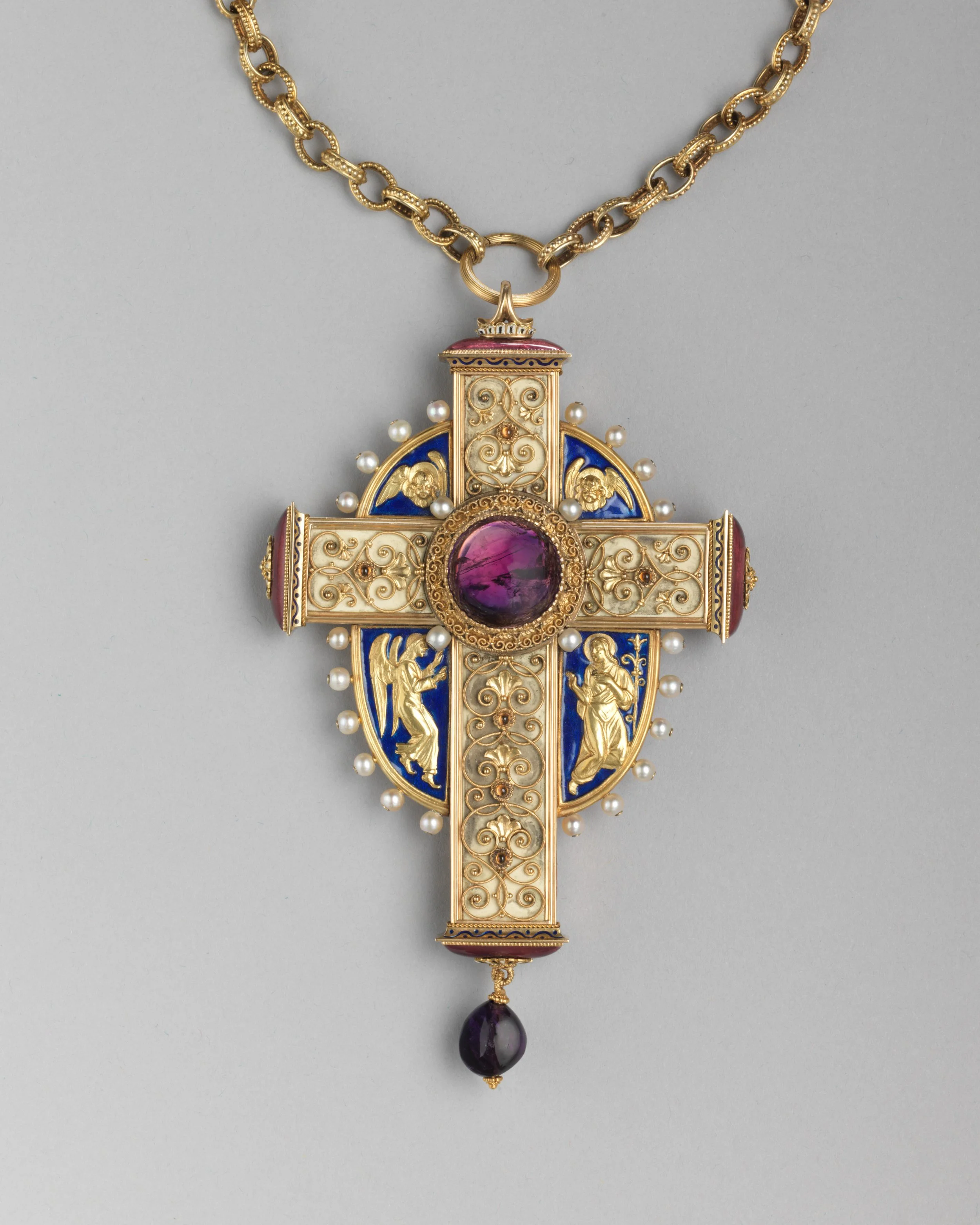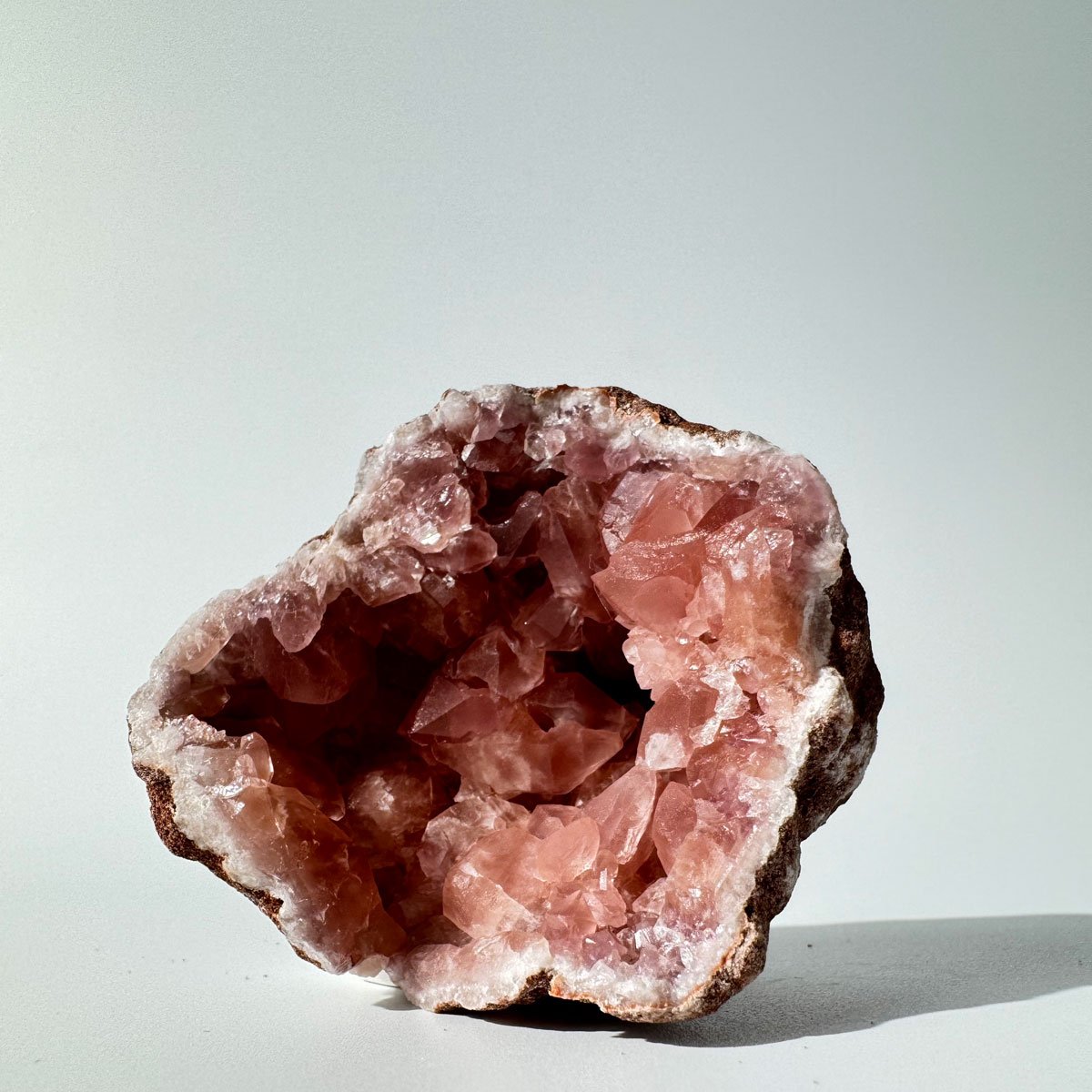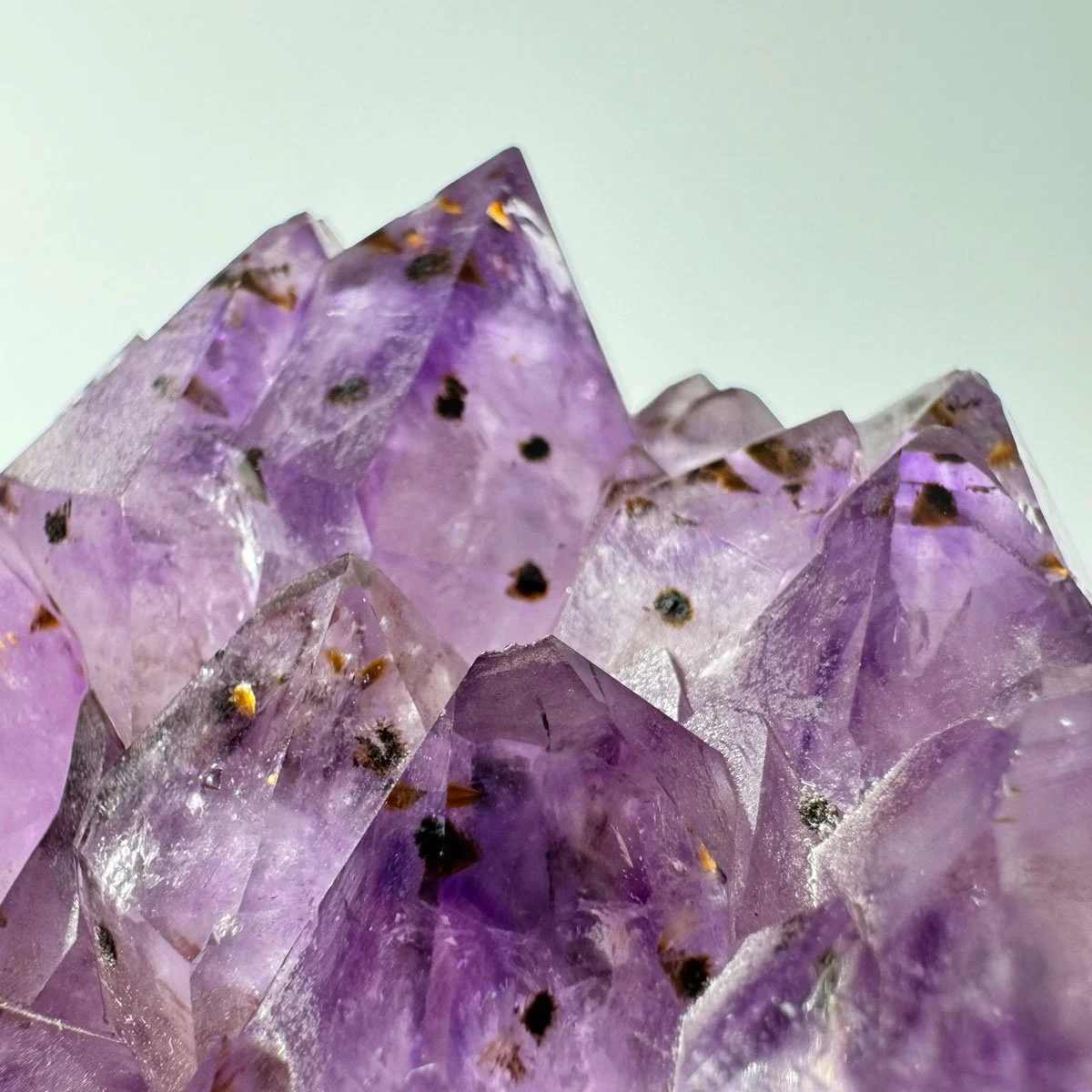AMETHYST.
The Sandman
When you wish for clarity of thought, divine wisdom, or a message from your spirit guides then Amethyst is your “go-to” crystal for all your existential questions. A crystal for spirituality, opening that Third Eye, or diving head first through that cosmic portal in your dreams. Amethyst is believed to aid sleep, purify your aura, bring forward spiritual awakening, and create a sense of deep relaxation.
Amethyst has been a popular semi-precious gemstone throughout history with many cultures adopting it for spiritual purposes. Its beautiful purple colour made it much sought after for jewellery during the Middle Ages and Victorian-era England, by ancient Egyptians as prayer Amulets, but artefacts of carved Amethyst have been discovered from as early as 2000 BC. It is often used to represent the national Thistle of Scotland in Scottish jewellery and has been worn for centuries by royalty across Europe.
1st Century to 3rd Century Roman Imperial period Amethyst bead in the form of a six-sided prism, the back cut in rough scarab-form; engraved with a nude Harpocrates holding a cornucopia and raising his left hand to his mouth.
© The Trustees of the British Museum.
Early European Christians believed it had a sobering effect and was worn by senior members of the clergy to show they had achieved an elevated spiritual status. This is where the lapidary term “Bishop’s Grade” came from. This belief of a sobering effect may well have originated from the ancient Greeks. They believed that Amethyst was created by the god of fruitfulness and wine, Dionysus, and as such could prevent intoxication so they would often have cups carved from Amethyst to stop the wine from going to their heads. I don’t think this worked.
The Pectoral Cross by Hemmerle for their 1900 display at the Exposition Universelle, the World Exhibition in Paris. A Pectoral Cross would often contain a relic of the True Cross preserved in a small compartment, they are only worn by high officials of the Catholic Church such as cardinals, bishops, or abbots.
© The Met Museum
Amethyst is mined in many parts of the world, with Brazil being one of the largest producers alongside Uruguay. There are also rare and interesting specimens of Amethyst that come from specific locations such as:
Vera Cruz. The delicate points of Vera Cruz Amethyst from the Sierra Madres mountain range in Mexico.
A Vera Cruz Amethyst cluster from Mexico.
Namibian Amethyst. Namibian specimens often contain beautiful Hematite inclusions, clear zoning, and sceptre formations from the Goboboseb Mountains, in the Erongo Region of Namibia.
Namibian Amethyst Sceptre with red Hematite inclusions
Brandberg Amethyst. The expensive and elusive Brandberg Amethyst with Smoky Quartz, Clear Quartz, and the occasional enhydro, also from the Brandberg region in Namibia.
Ametrine. A rare combination of Citrine and Amethyst with the best specimens often coming from the Anahi Mine in Bolivia. Oxidized iron inclusions and temperature variations during its formation cause this unusual yellow and purple zoning effect.
Ametrine crystal tumbles from Brazil
Black Amethyst. As its name suggests a black variety of Amethyst, it is sometimes called Galaxy Amethyst. Higher contents of Hematite, Iron and possibly Nickel cause this deeper black colour.
Red Cap Amethyst. This is Amethyst coated with red Hematite and can generally be found in Canada, Namibia and Brazil.
Super Seven. This mineral mix is also known as the “Stone of Higher Consciousness” and it contains at least seven of the following minerals including Amethyst, Cacoxenite (does form in Quartz no matter what some random person on Minedat wrote), Clear Quartz, Geothite, Rutile, Smokey Quartz, and Lepidocrocite. Super Seven are only found in the Espirito Santo region of Brazil, located north of Rio De Janeiro.
Super Seven Amethyst crystal from Brazil
Auralite 23. This rare form of Amethyst is only from the Boreal Forests, Thunder Bay, Ontario, Canada. It consists mainly of Amethyst and at least 8 of 23 minerals, The 23 minerals, identified by X-ray diffraction, contained within the matrix are Titanite, Cacoxenite, Lepidocrocite, Ajoite, Hematite, Magnetite, Pyrite, Goethite, Pyrolusite, Gold, Silver, Platinum, Nickel, Copper, Iron, Limonite, Sphalerite, Covellite, Chalcopyrite, Gialite, Epidote, Bornite, and Rutile.
Auralite 23 raw ‘tooth’ point from Canada.
Pink Amethyst. Much of the commercial “Pink Amethyst” from Brazil that you often see as beautiful slabs or carved into fun shapes is not Pink Amethyst in the true sense of the term. Real Pink Amethyst only forms in small crystalised geodes in Patagonia.
Rare Pink Amethyst geode from Patagonia.
Tradename “Pink Amethyst” crystal slab with green Copper inclusion from Brazil
Chevron Amethyst. This derives its name from the white (white quartz) and purple (purple amethyst) chevron patternation. It only comes from Brazil, Russia and some places in India.
Chevron Amethyst from Brazil.
Spirit Quartz / Cactus Quartz. Comprising Amethyst points covered with large druzy crystals on the sides. It is mined in north west South Africa by locals at a very small scale.
Spirit Quartz / Cactus Quartz from South Africa.
Prasiolite. This is a naturally green form of Amethyst. There are some naturally occurring examples from Thunder Bay in Canada, Poland and Brazil, but much of the Prasiolite on the market is heat treated Amethyst.
Dreamcoat Lemurian. A relative newcomer on the spiritual crystal scene, these new crystals are found in Brazil and have been given the trade name (or marketing name) of Dreamcoat Lemurians. These Amethyst and Clear Quartz points have what looks like a ‘coating’ of Amethyst resembling a ‘phantom’ just under the surface, they also have a coating of iron-rich silica, giving them a golden hue.
Prasiolite. I suspect it is heat-treated, from Brazil.
Dreamcoat Lemurian from Brazil.
Inclusions: Amethyst can also have some pretty cool inclusions and natural coating. I’m not talking about the aura stuff here. Hematite forms red spots inside the crystal matrix or complete coatings of the surface as with Red Cap Amethyst. Goethite appears as small brown/black dots and smudges inside the crystal (see image at the top of the page) while Cristobalite appears as if they are tiny white snowballs trapped inside the crystal. Sometimes Pyrite grows with Amethyst, kind of nestling into the crevices of the structures, this is rare and pretty expensive, but the colour combo is wow.
White Cristobalite sphere in Amethyst.
Brown Goethite flecks in Amethyst.
Example of low-grade Amethyst which has been heat treated to turn it a burnt yellow/orange colour. Often this is sold as Citrine.
Buyer’s Guide to Amethyst
Private Buyers
When you are buying standard Amethyst there are some basics you should look for. If you are buying a raw cluster then first check for damage, make sure all the points are intact and no points are wobbly. Amethyst, especially from Uruguay, can form on a thin crust so you need to gently make sure it isn’t going to break apart. Next is colour, the richer and more vibrant the purple, generally the better quality and the more you will pay (some pale Amethyst is very beautiful too, it depends on personal taste). The clarity should also be good, it should be translucent and not murky. I love inclusions (see “Inclusions” above), I get very excited when I find a piece of Amethyst with something interesting going on inside whether it be a smudge of Goethite or even better a snowball of Cristobalite - in the trade these specimens are often priced down or the same as regular Amethyst as they are seen as not “clean” - if you spot one snag it. If you are buying a rare variety of Amethyst such as Chevron Amethyst, Red Cap Amethyst, Auralite, Super Seven, or Ametrine, look for good strong colour definition and zoning between the different types of minerals.
Retail Buyers
For wholesale Amethyst, you can usually get good quality “flats” (trays of crystals) from Uruguay. You have to take the whole flat but generally, they are good quality. Look for a rich purple colour, damage to the tips, and the right sizing for your store. We used to sell by size (longest length) rather than weight as it’s easier for people to visualize this. For larger pieces the Brazilian Amethyst looks a bit better as it often has Clear Quartz on the cut horizon line and taller crystals. If you can, buy pieces on robust black metal stands, this significantly elevates the piece. Again look for good colour, check for damage, and remember any interesting inclusions only add to the interest the piece will receive. Some Cristobalite balls, white dogtooth Calcite, druzy crystals, and interesting coatings will all sell well in store and online (Instagram).
Quick Guide | Amethyst
Zodiac: Amethyst is associated with the zodiac signs Aquarius and Pisces.
Ruling Planet: Amethyst’s ruling planets are Jupiter and Neptune.
Chakra: Amethyst is associated with the Third Eye (Ajna) and Crown (Sahastrara) Chakras. Its glittering purple colour corresponds well with these Chakras and is used to open up psychic channels.
Element: Amethyst is connected to the Water element.
Crystal Charging: Amethyst can charged overnight under a full moon. Energy clearing can be done with a smoke cleansing with Sage.
Crystal Elixir: Amethyst is suitable for making crystal elixirs as it is a hard silicate Quartz without soluble impurities.
Crystal Care: Amethyst can be cleaned with warm soapy water but you should avoid submerging it in ice-cold water as this may cause thermic shock and internal fissures to crack. If you have a large raw cluster you can use a soft brush, such as a make-up brush, to clean all the nooks and crannies or if you are feeling very tech savvy you can use a compressed “air duster” that is usually used for cleaning computer keyboards, this will blast any dust right out of the crystal. Do this with care though, and wear protective goggles/glasses to avoid getting a direct hit with any particles. Also, do this away from a naked flame. I almost set the shop on fire doing this next to a candle once - almost shit myself.
Amethyst should not be placed in direct sunlight as continued exposure to solar rays will cause colour fading.
The chemical formula for Amethyst: SiO₂

















